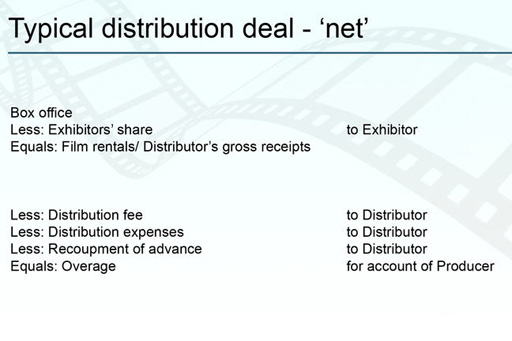3.2 How profitable is the theatrical release?
You've read quite a bit about how the release in cinemas is the first window. It helps to build value for the film in other windows, but it is often not very profitable in itself.
You’re going to take a look now at how the cash flows for cinema release work, so you can see for yourself how difficult it is for a film to make money simply from cinema release.
Take a look at Figure 3, then read on for some explanation of conceptual terms.
- Box office is the amount of money the film takes in cinemas. One way to look at it is as the number of cinema admissions multiplied by the average ticket price. (Note that all the money from popcorn and fizzy drinks and other ‘concession sales’ is kept by the cinema).
The amount of money taken at the box office is split between the exhibitor (the cinema) and the distributor.
- The money returned to the distributor is called film rentals.
- The distributor earns a fee from film rentals.
- The distributor then recoups, or recovers, the money it advanced in marketing costs, or prints & ads costs (P&A).
- The distributor recovers money it paid to ‘buy’ or license the film, sometimes called the advance.
- Finally, what is left over goes to the producer.
So that’s a lot of different ways to split money before the producer sees any return.

